Goatsrue identification and control
Information about the noxious weed goatsrue. Goatsrue is also known by its Latin name, Galega officinalis.
About this weed
Goatsrue is a regulated Class A noxious weed. This means eradication is required state-wide. Goatsrue is also on the Washington quarantine list and it is illegal to buy, sell or offer it for sale in the state.
Goatsrue is known as Galega officinalis and it is in the legume family.
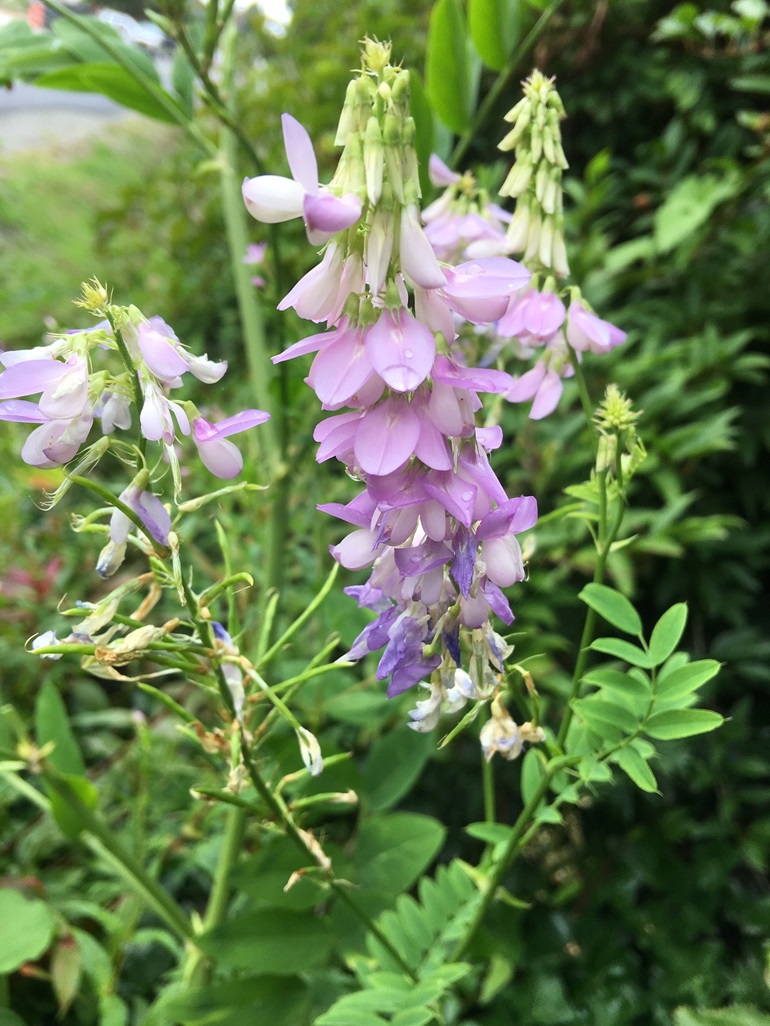
Why it's a problem
Goatsrue’s stems and leaves contain a poisonous alkaloid. Ingesting the plant is harmful and can even be fatal to sheep, cattle, and humans. It displaces native and beneficial plants. It forms monocultures in wetlands, limiting food and nesting resources for native wildlife.
Plant description
Goatsrue is a perennial herbaceous plant. It has a deep taproot. Goatsrue can reach up to 4 feet tall with many hollow, tube-like upright stems. The leaves are alternate with 13-21 leaflets. Leaves do not have tendrils. Goatsrue flowers are purple, pink, or white and pea-like. They form in clusters at the stem end. It flowers June to October. Goatsrue reproduces by seed; one plant can produce up to 15,000 seedpods. Seeds fall near the plant and spread by erosion, rain, animals, and human activity. They remain viable in the soil for at least 5-10 years. There is a limited distribution in King County. It tends to grow in wetlands and marshy areas but has been found along roadsides and in open fields. It prefers full sun but will tolerate shade. Goatsrue is from Europe and Asia.
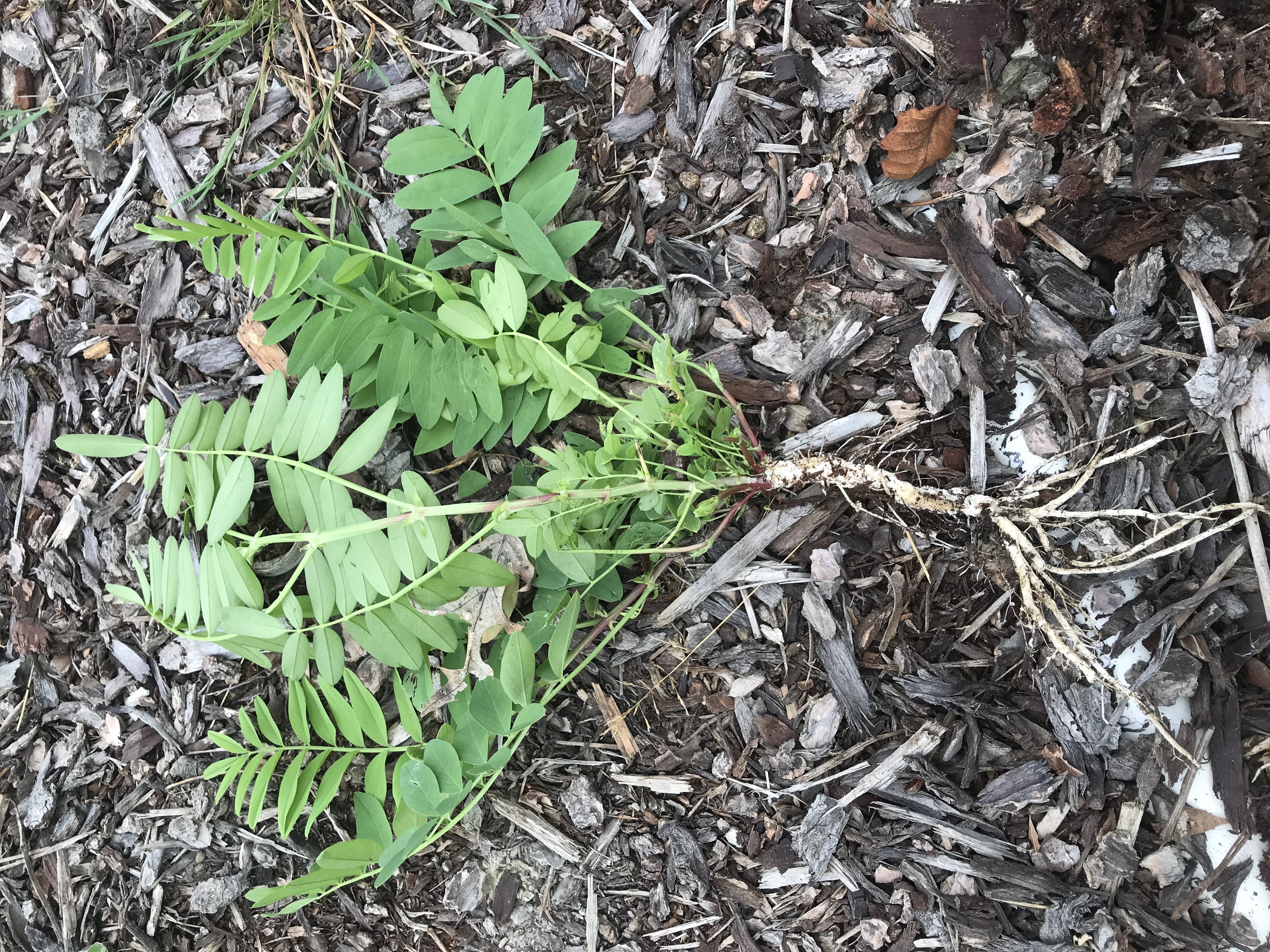
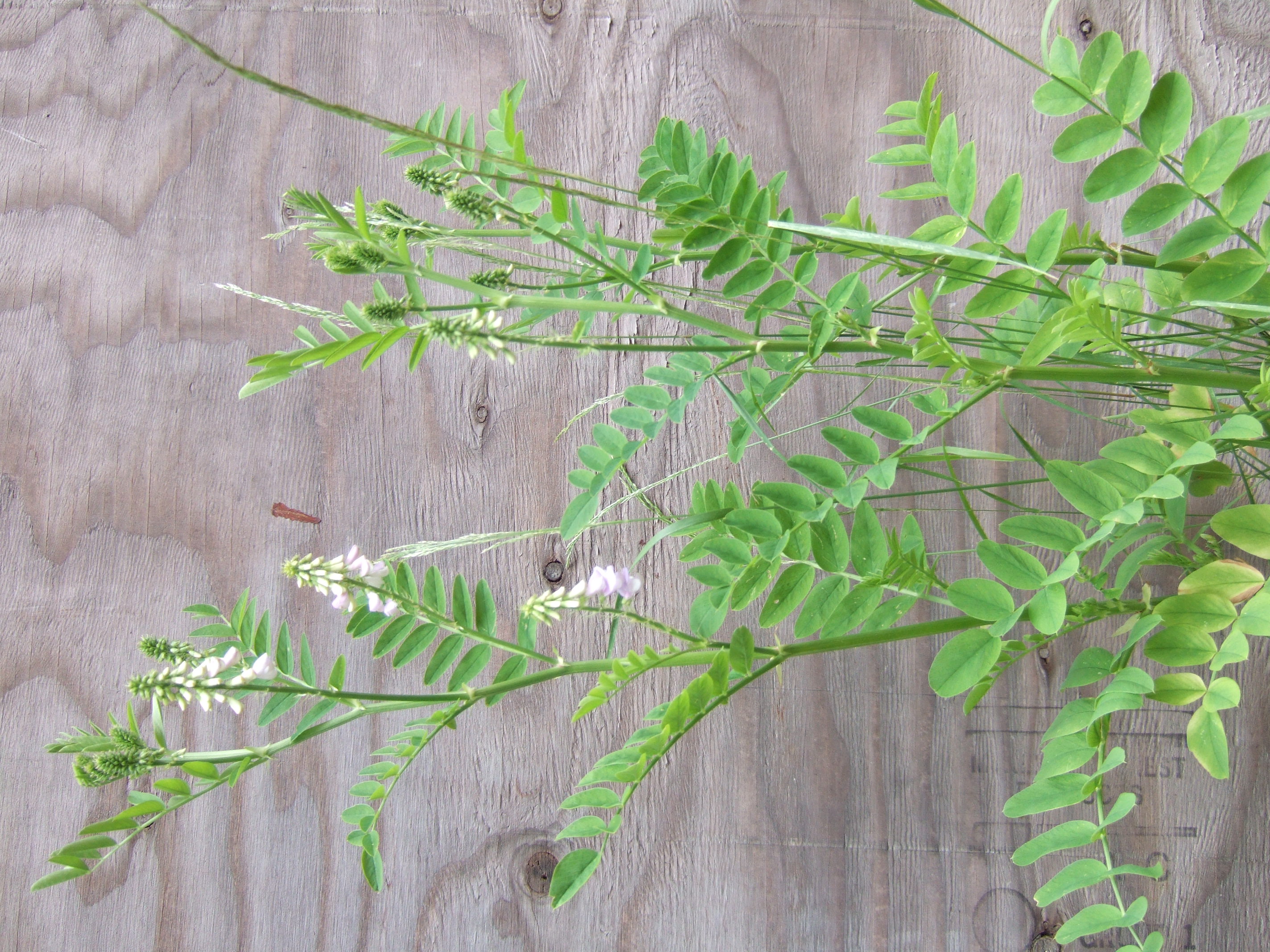
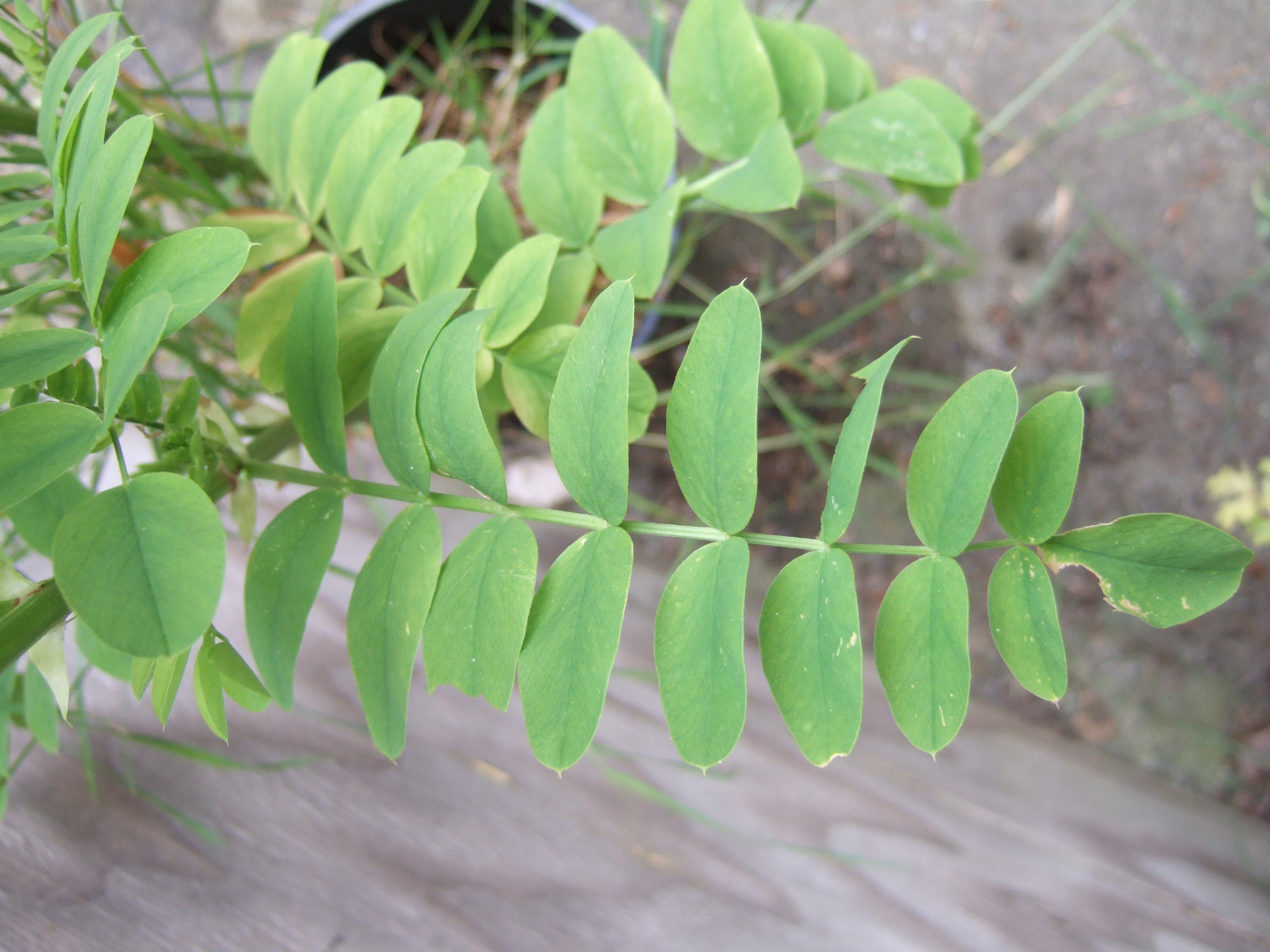
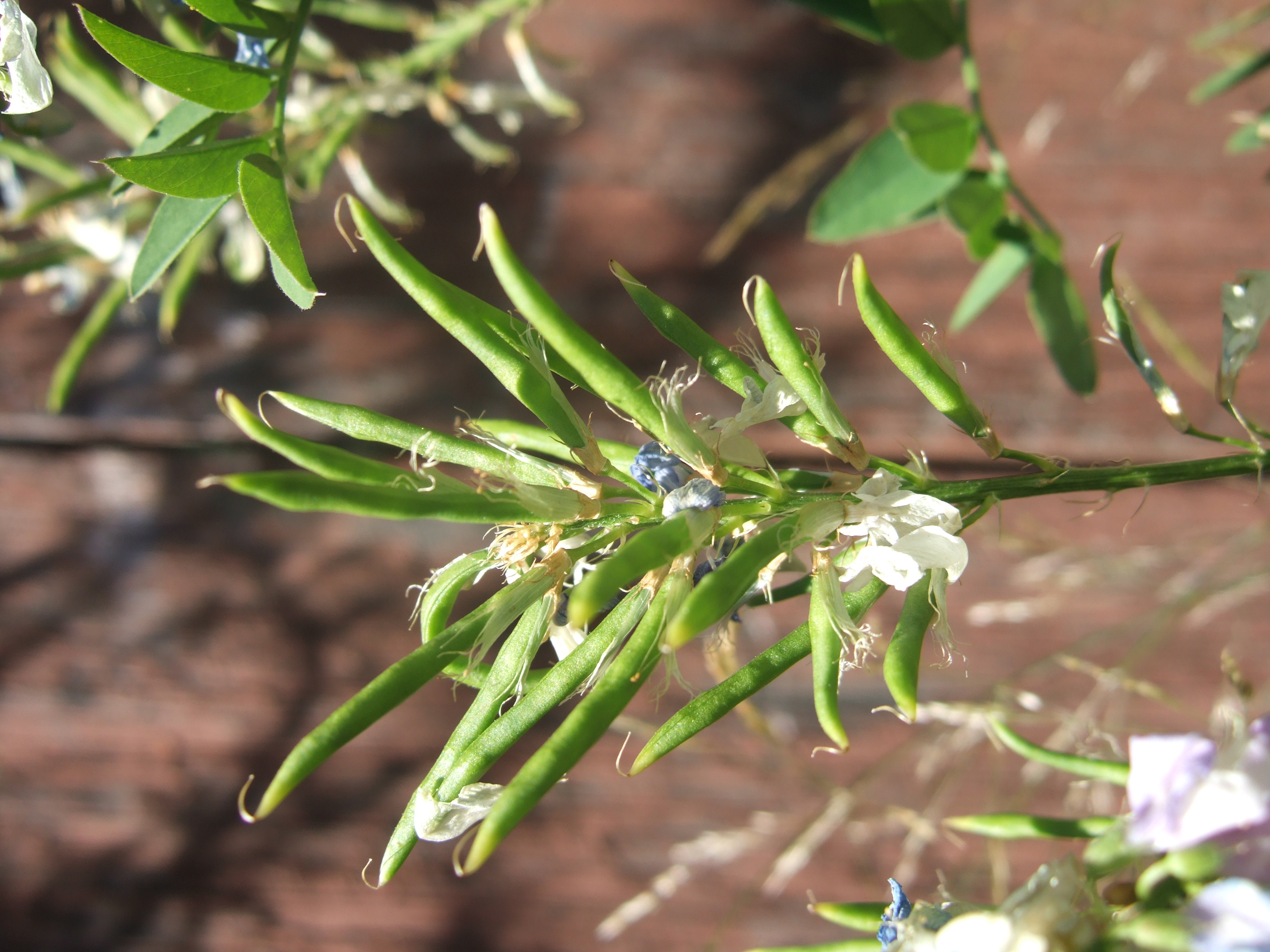
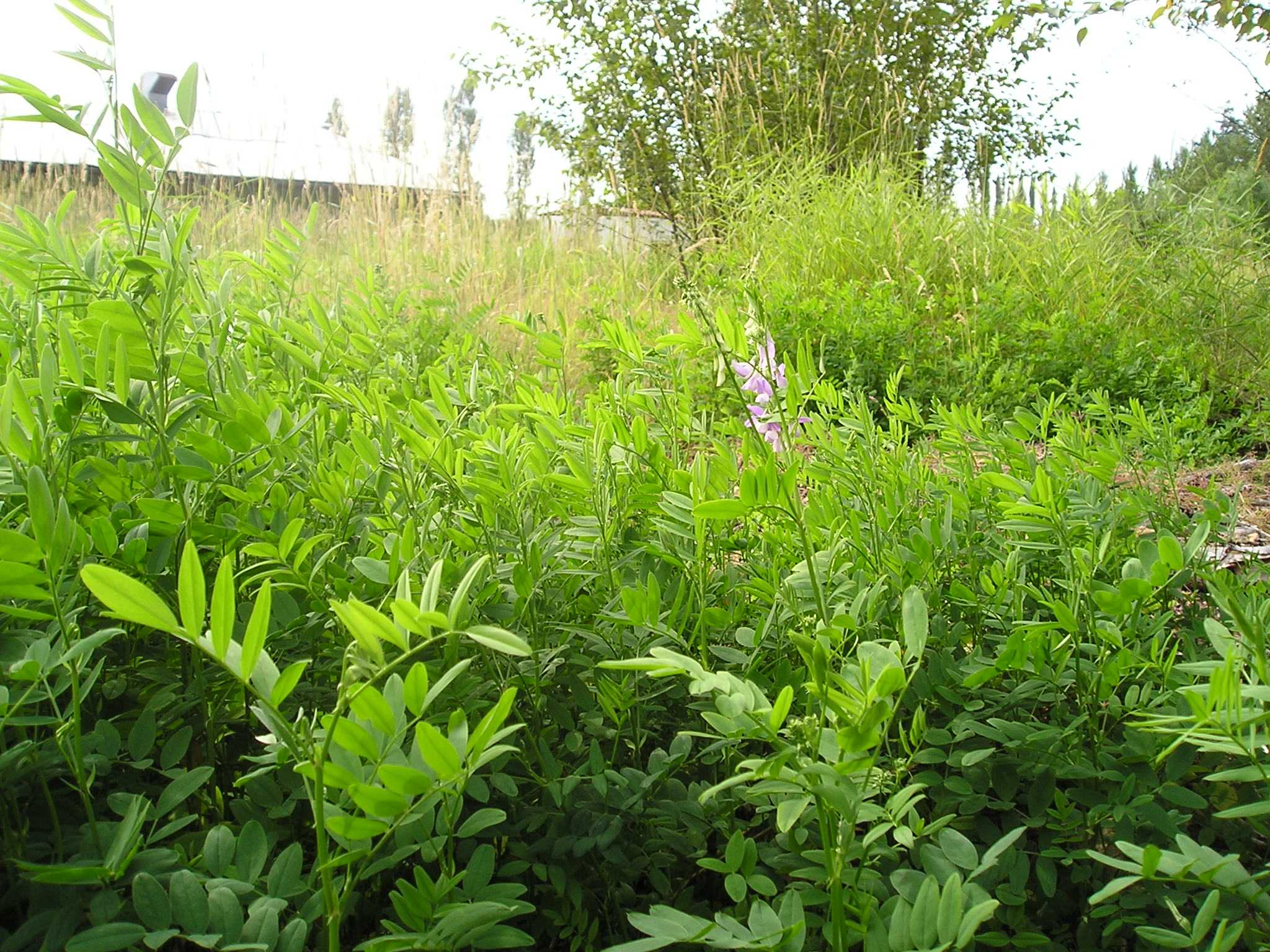
Be aware of look-alike plants
Wild licorice (Glycyrrhiza lepidota), a plant that is native to Washington. You can tell them apart by their stems: goatsrue plants have hollow stems, but wild licorice stems are solid. Wild licorice also has bur-like seedpods with hooked bristles. Goatsrue has narrow, smooth seedpods.
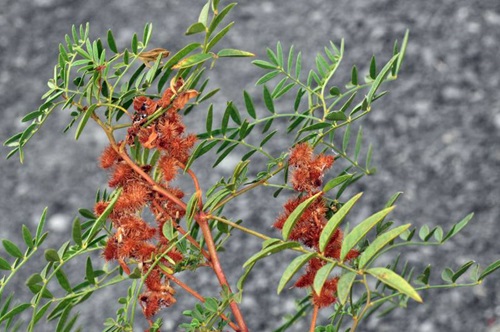
Other plants in the pea family (Fabaceae): like vetches, peas, and locust tree seedlings. You can tell them apart by looking for tendrils or thorns. Goatsrue has neither.
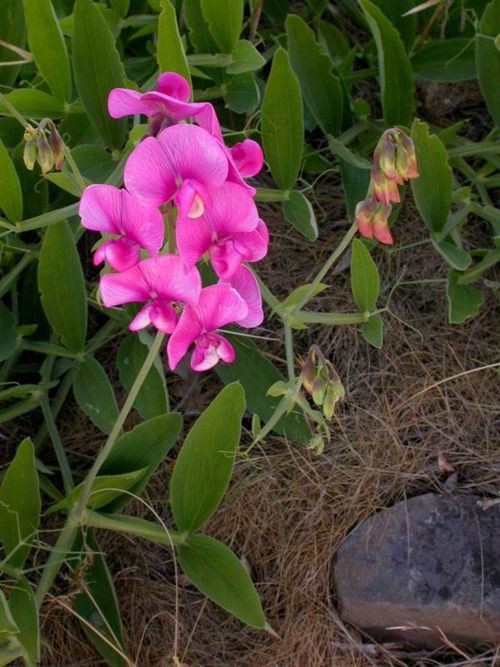
What to do if you find it
Property owners are required to control goatsrue on lands that they manage. Please notify us if you see goatsrue growing in King County. Our program staff can provide the property owner or appropriate public agency with site-specific advice on how best to remove it. We map all known locations of regulated noxious weeds such as goatsrue in order to help us and others locate new infestations in time to control them.
Control methods
Best results come from using a combination of the control methods.
Listed below and actively monitoring for any new growth. Goatsrue forms dense crowns capable of regenerating for several seasons. It also produces a long-lived seed bank in the soil. The key to success is sustained control over many years to deplete the seed bank.
Manual control
For small sites with few plants, dig up plants. Be careful to remove as much root as possible so the plants will not resprout. This method can be highly labor-intensive. To be fully effective, all mature plants need to be removed so that no new seeds are produced.
Mechanical control
Mowing, clipping, and cutting are not recommended on their own. Goatsrue will flower and produce seeds even when cut short. To be effective, mechanical measures must be followed with herbicide treatment when plants regrow. However, seed pods can be clipped and disposed of to help prevent the spread of seeds in areas undergoing eradication work.
Chemical control
Stay safe when using herbicide:
- Always read the label before use.
- Wear a long-sleeved shirt, long pants, shoes, and eye protection.
- Follow state and local regulations.
There is little research on effective herbicides. Triclopyr, Imazapyr, Aminopyralid, and 2, 4-D have been found helpful.
See the PNW Pest Management Handbook for the most up to date and specific method for chemical control of goatsrue.
Avoid spraying where there is a chance that herbicide will enter a waterway or wetland unless you are using a state-approved aquatic herbicide and have the required permits and licenses to do so. Use of pesticides in water is regulated in Washington state. See Washington Department of Ecology Aquatic Pesticide Permits for details.
For more information or a site-specific control recommendation in King County, contact the noxious weed program. For information in other counties in Washington state, contact your local weed board or your local cooperative extension office.
Disposal instructions
- Garbage only
- Wear gloves
- Do not eat
Washington State Noxious Weed Control Board pamphlet on noxious weed disposal

 Translate
Translate